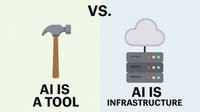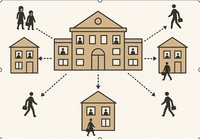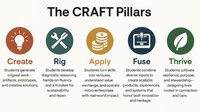The U.S. education system has relied on digital learning tools for quite some time, though this was certainly exacerbated by the COVID-19 pandemic and subsequent need for online resources. Suddenly, with students learning from home, it was much more difficult to track progress, ensure devices were being used properly and spot bullying incidents.
Despite the fact that most students are back in the classroom, it’s clear that the pandemic and increased screen time have negatively impacted digital behaviors and mental health and wellbeing.
The learning environment has become more challenging for school districts – and the pressure to address it has never been greater. In response, a new wave of EdTech solutions have been developed and released to help school leaders elevate student outcomes, curb behavioral issues, increase classroom engagement and more.
Given the options, it can be challenging to identify the best EdTech tools for your school district. The key to success is finding the right fit for your district’s specific needs and recognizing that introducing the wrong technology could have negative short- and long-term consequences.
Do Your EdTech Tools Fit Your District?
The simplest way to gauge whether the technology you’ve invested in is a fit for your school district is to examine how many stakeholders are actually using it. Are your teachers, staff and students logging in and engaging with the technology or is it lying mostly dormant?
Next, are you achieving the progress you expected when you first onboarded this tool? Whether you implemented this technology to improve test scores or enhance student engagement, in order to prove a return on your investment, you need to be able to measure notable progress towards your goals. If you’re not seeing progress, you may need to reevaluate.
Lastly, what’s the overall sentiment towards this technology? Some staff members may just be using it because it’s mandated, without really being "all in.” To combat this, poll your staff anonymously to find out if they see the real value in the technology – and ask why or why not for additional perspective.
Potential Consequences of Implementing the Wrong Fit
Implementing the wrong technological fit means you won’t get the results you’re looking for, hindering your ability to reach district goals. It could result in lost dollars and reduce morale.
You may even start to notice heightened staff burnout or a lack of willingness to try new EdTech tools.
- Tips for Evaluating Technologies
Each district has its own goals, meaning there isn't a one-size-fits-all approach to searching for EdTech solutions. However, there are a few things that all school leaders should keep in mind when evaluating technologies:
- Define a clear goal. Don’t begin shopping for EdTech software until you’ve outlined what goals you’re trying to achieve. Are you looking to improve test scores? Reduce bullying? Increase classroom engagement? Detect students at risk? Without first identifying your top needs, you won’t be able to choose a tool that properly addresses them.
● Research your options. Ensure that your research is thorough and unbiased. Touch base with neighboring school districts that may have similar demographics and goals. What technology have they implemented and how has it worked for them?
● Focus on interoperability. It’s essential that the EdTech tool you decide to implement integrates well into your existing tech stack. Maybe your neighboring school district uses an effective EdTech software, but they operate on Windows while you use Google Chromebooks. Finding a tool that is device-agnostic and can integrate with most major platforms facilitates easier implementation.
● Ensure the technology comes with tracking mechanisms. You can’t be confident that an EdTech tool is working for your district if you’re not able to properly track adoption, usage and progress. Effective EdTech tools have systems in place to measure outcomes and provide impactful analytics.
For Example...
Let’s examine the goal of heightening parent and guardian involvement in your students' digital habits.
To make progress towards this goal, you’re going to need to offer a platform that provides parents with easy visibility into how their children are using school-issued devices.
EdTech tools are essential to overcoming ongoing K-12 challenges and, when properly vetted and implemented, they can truly move the needle for students and staff. However, the importance of taking the time to invest in the most effective technology for you and your district cannot be overstated. Selecting your technology carefully and strategically will result in better outcomes, a more enriched learning environment and a clearer path toward success for your students.
About the author
Harrison Parker is Executive Vice President, North America at Linewize, a K-12 cyber safety management system and an emerging leader in the fast-growing global cybersafety and EdTech sector.











